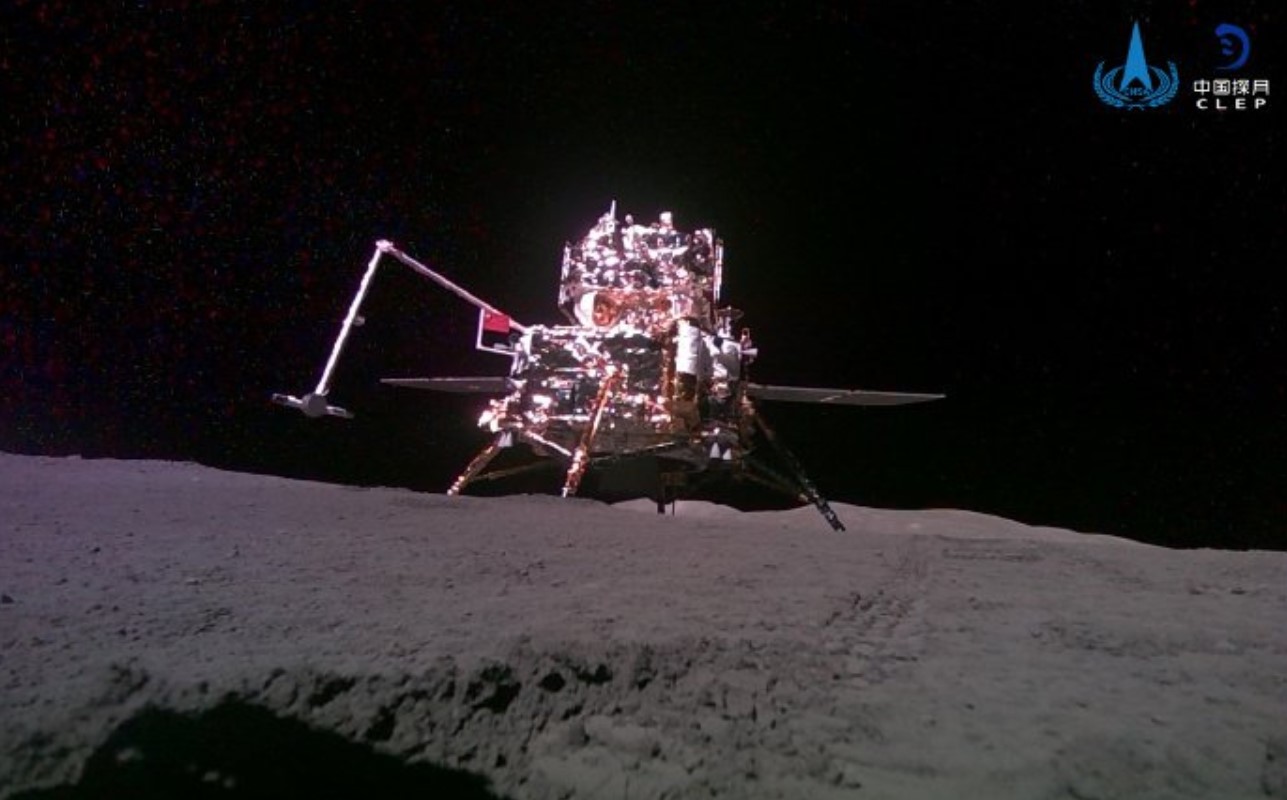Products You May Like
HELSINKI — China’s Chang’e-6 spacecraft is on its way to Earth to deliver samples collected from the far side of the moon.
The Chang’e-6 service module likely fired its engines for a trans-Earth injection around June 21. The spacecraft is now on the final leg of its complex, 53-day voyage involving a lunar landing, sampling, ascent and docking. A reentry capsule containing the unique samples will be released from the service module shortly before arrival at Earth early June 25.
The China National Space Administration (CNSA) has not provided an update on any maneuvers to bring the spacecraft out of lunar orbit and towards home. However, optical and radio amateur observations show the Chang’e-6 spacecraft to be headed for Earth.
Observations and data shared by astronomer Bill Gray and others and radio tracking by individuals and groups including Scott Tilley and AMSAT-DL provide evidence of Chang’e-6’s activities.
Upon return to Earth, the reentry capsule is expected to touch down at Siziwang Banner, Inner Mongolia during an half-an-hour long window opening at 1:41 a.m. Eastern (0541 UTC) June 25. The information is according to airspace closure notices. CNSA has not openly published timings of mission events in advance.
The reentry capsule will first skip off the atmosphere to kill some of the energy of a high velocity return from the moon before making its reentry into Earth’s atmosphere.
Retrieval of the samples will allow extensive research into the composition and evolution of the far side of the moon. The collected material could provide insight into why the near and far sides are so different, and clues about the history of the early solar system.
Mission milestones
Chang’e-6 launched atop a Long March 5 rocket from Wenchang May 3, reaching lunar orbit just under five days later. Its lander-ascent vehicle combination landed at 41.6385°S, 206.0148°E in Apollo crater within the vast South Pole-Aitken basin June 1.
The mission’s ascent vehicle lifted off with up to 2,000 grams of material collected by a scoop and drill around 49 hours later. The ascender docked with the Chang’e-6 service module in lunar orbit June 6. The mission sample container autonomously transferred to the reentry capsule after docking.
The ascender deorbited into the moon days later, according to amateur radio tracking. CNSA has not issued a statement on the fate of the ascender, but this would match protocol from the 2020 Chang’e-5 mission.
The Queqiao-2 relay satellite facilitated mission operations on the lunar far side. The spacecraft, launched ahead of Chang’e-6, allows communications with the lunar far side which, due to Earth’s gravity slowing the rotation of the moon, never faces Earth.
NASA Administrator Bill Nelson congratulated China on the progress of the mission following liftoff of the ascender.
European Space Agency head Josef Aschbacher also expressed his congratulations to CNSA. He also noted the success of the collaboration between China and ESA on the Chang’e-6 mission.
This includes the successful collection of data by the NILS (Negative Ions on Lunar Surface) instrument and ESA ground station support for early mission phases and the return to Earth. Cooperation between ESA and China in the lunar sphere could however be coming to an end.
Beyond Chang’e-6
NASA’s Lunar Reconnaissance Orbiter (LRO) spotted the Chang’e 6 lander on the rim of an eroded crater within Apollo crater. LRO imaged the lander June 7, after the ascent vehicle had launched collected samples into lunar orbit.
The landing was only the second on the lunar far side. It follows the 2019 Chang’e-4 lander and rover mission landing. That mission, together with the Chang’e-5 nearside sample return, paved the way for Chang’e-6.
Upon releasing the reentry module, the Chang’e-6 service will likely fire its engines to avoid reentry. The spacecraft could then be sent on an extended mission, depending upon propellant reserves. The Chang’e-5 orbiter visited Sun-Earth Lagrange point 1 before returning to the moon to test out a distant retrograde orbit. Outside parties again tracked Chang’e-5’s extended activities.
China’s next lunar mission will be the multi-spacecraft Chang’e-7 in 2026. The Chang’e-8 in-situ resource utilization and technology test mission will follow around 2028.
These are described as precursor missions to the China-led International Lunar Research Station (ILRS). Super heavy-lift launches in the early 2030s will construct ILRS. A number of countries and organizations have signed up to the project.
Before this, China aims to send a pair of astronauts to the lunar surface before 2030.
| Milestone | Description | Date |
| Launch of Queqiao-2 | Launch of relay satellite to support Chang’e-6 | March 19, 2024 |
| Queqiao-2 Lunar Orbit Insertion | Queqiao-2 enters lunar orbit | March 24 |
| CE-6 Mission Launch | Launch of the Chang’e-6 spacecraft | May 3 |
| Lunar Orbit Insertion | Spacecraft enters lunar orbit | May 8 |
| Lunar Landing | Descent and landing on the moon | June 1 |
| Sample Collection, surface operations | Collection of lunar soil and rock samples | June 1-3 |
| Ascent from Lunar Surface | Ascent vehicle launches from the moon to lunar orbit | June 3 |
| Rendezvous and Docking | Ascent vehicle docks with orbiter in lunar orbit | June 6 |
| Trans-Earth Injection | Maneuver to send orbiter towards Earth | ~June 21 |
| Earth Re-Entry and Landing | Return capsule re-enters Earth’s atmosphere and lands | Expected June 25 |
